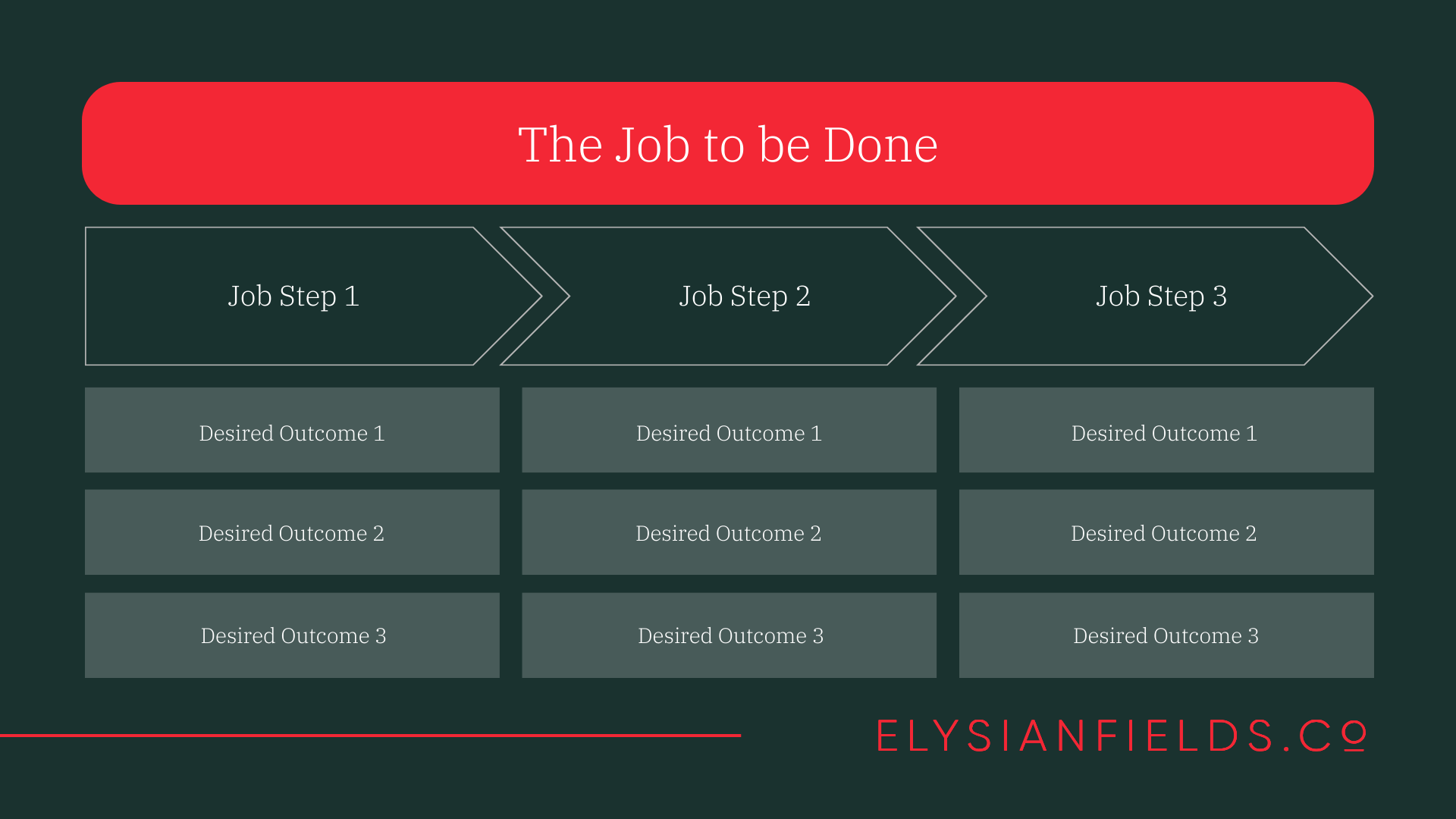Insight into the real Jobs a buyer is trying to get done can be found in the process they go through to do these Jobs.
For example, let’s say an HR manager is trying to deliver a learning and development (L&D) programme in a small Enterprise. They are short on resources, are not L&D experts, have some old technology to serve out of date courses to fellow employees and are generally stressed about the whole damned thing.
One of their important Jobs might be to align their new programme with their employer’s commercial objectives. Where do they start? How do they measure the impact of the training they provide? How do they get training that’s suitable for each commercial objective in the first place?
Each Job has multiple ‘Job Steps’
Getting the Job done is fraught with nuanced choices, such as which people to engage, what processes to follow, and which platforms to use. People, Processes and Platforms: the 3 Ps of getting Jobs done.
Job Steps are the steps buyers take towards getting a Job done; the choices and decisions they make. These Steps make up the process of getting the Job done.
We can find each Job Step and define its importance to the overall process by mapping the following:
Jobs to be done
The task or outcome the Buyer might hire a solution to achieve.
Pains to avoid
Problems they’re trying to solve that stop the Job getting done
Gains sought
Personal and professional advantages of solving the problems and getting the jobs done.
Alternatives and Workarounds used to get the Job done
These can be people, processes and platforms – the existing methods and technology being deployed.
We also need to know where the money comes from to get the Job done & how it is used. We find out who owns the budget and how the Buying Cohort makes spending decisions. It’s about spending not buying: spending the budget to get the Job done will involve interns, time, freelancers, agencies etc, not just technology acquisition.
This process helps us know how the market is moving. We can spot adjacent threats that customers might be favouring to get their Job done. For example, with AI eating into many services, tracking how the buyer is using AI in your sector will be important.
Ranking the Jobs to be Done
We look out for Jobs that are important, so we can prioritise product, marketing and sales effort on them.
Our messaging should be addressing worries about how we help get these Jobs done. Our sales support should deliver details on how we help customers get the Jobs done with a 3 year success programme, so no customer is left behind. Our product roadmap should be aligned to the Jobs so we can show evidence of how Job success is baked into the product experience.
How to rank Jobs
High ranking Jobs are characterised by pains and gains that are:
1. Important
Does failing to get the Job done lead to extreme Pains?
Does failing to get the Job done lead to missing out on essential Gains?
2. Unsatisfied
Are there unresolved Pains?
Are there unrealised Gains?
3. Tangible
Can they immediately or often…
Feel the Pain?
See the Gain?
4. Lucrative
Are there many with this Job, Pain or Gain?
Are there a few willing to pay a lot?
Can we use this information to create high value Segments?
Use this list to:
a) Understand if and how you can deliver on these jobs or outcomes.
When you look at your product’s credibility through this lens you can quickly see where services or customer success activity is needed to bolster the product’s ability to get the Jobs done
b) Create an innovation list for new products / offers to share with the business.
This is something that naturally comes from the primary research, so work with Product and Sales teams to better understand how the high ranking Jobs align with product roadmaps.
In summary
Not all Jobs are created equal. If we know how our prospects measure the success of their efforts we can understand which Jobs are important and which have the most barriers to achieving them.
Insight can be found in the process they go through to do these Jobs. By understanding the process we can create products and customer success programmes that get the Jobs done, coupled with messaging that reassures Buyers of the value we can create for them (see this blog post on how to create Value).
If you want to learn more please watch the Webinar on how to use Jobs to be Done below
Or get in touch! I’m always happy to hear your thoughts and answer questions directly

